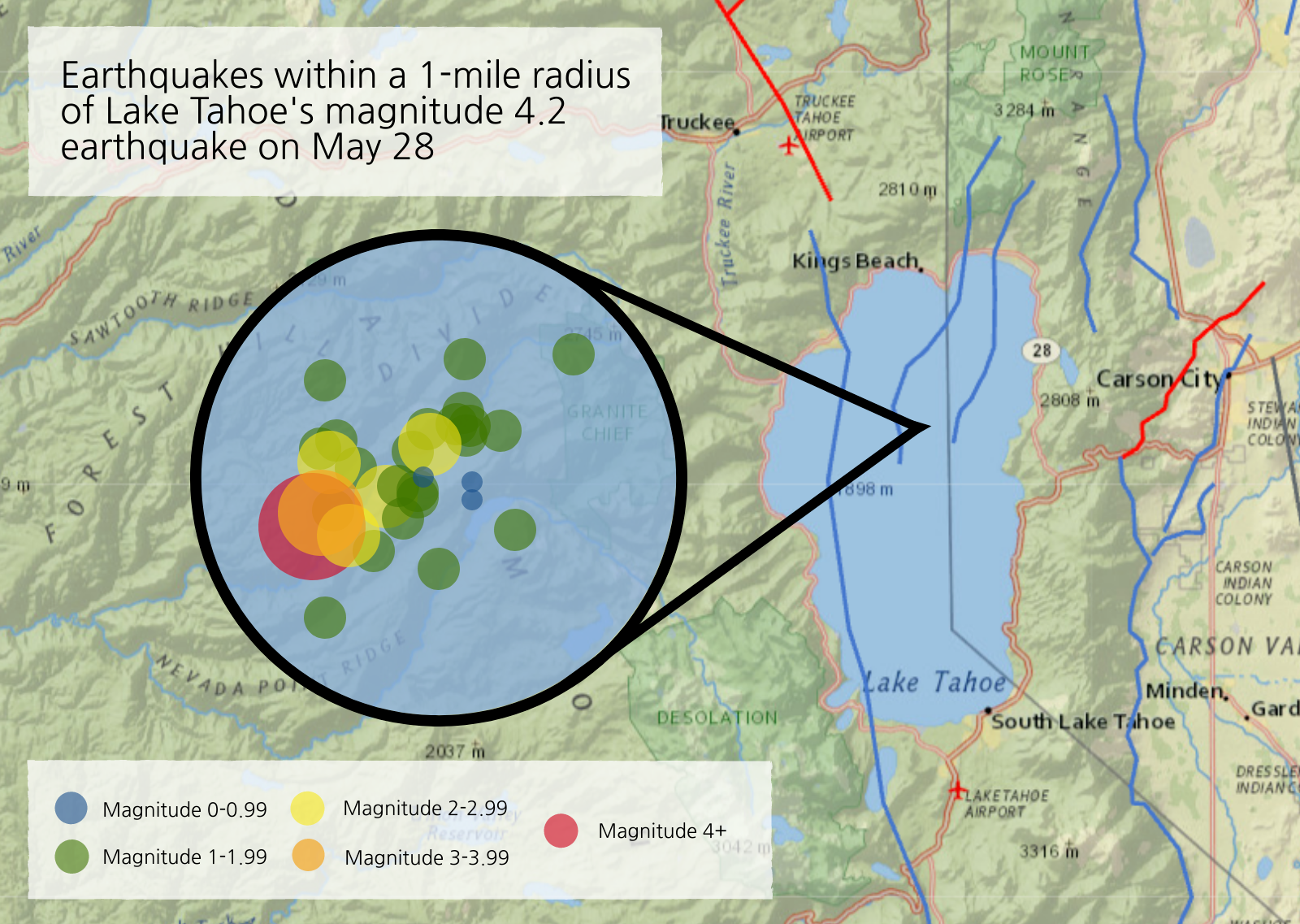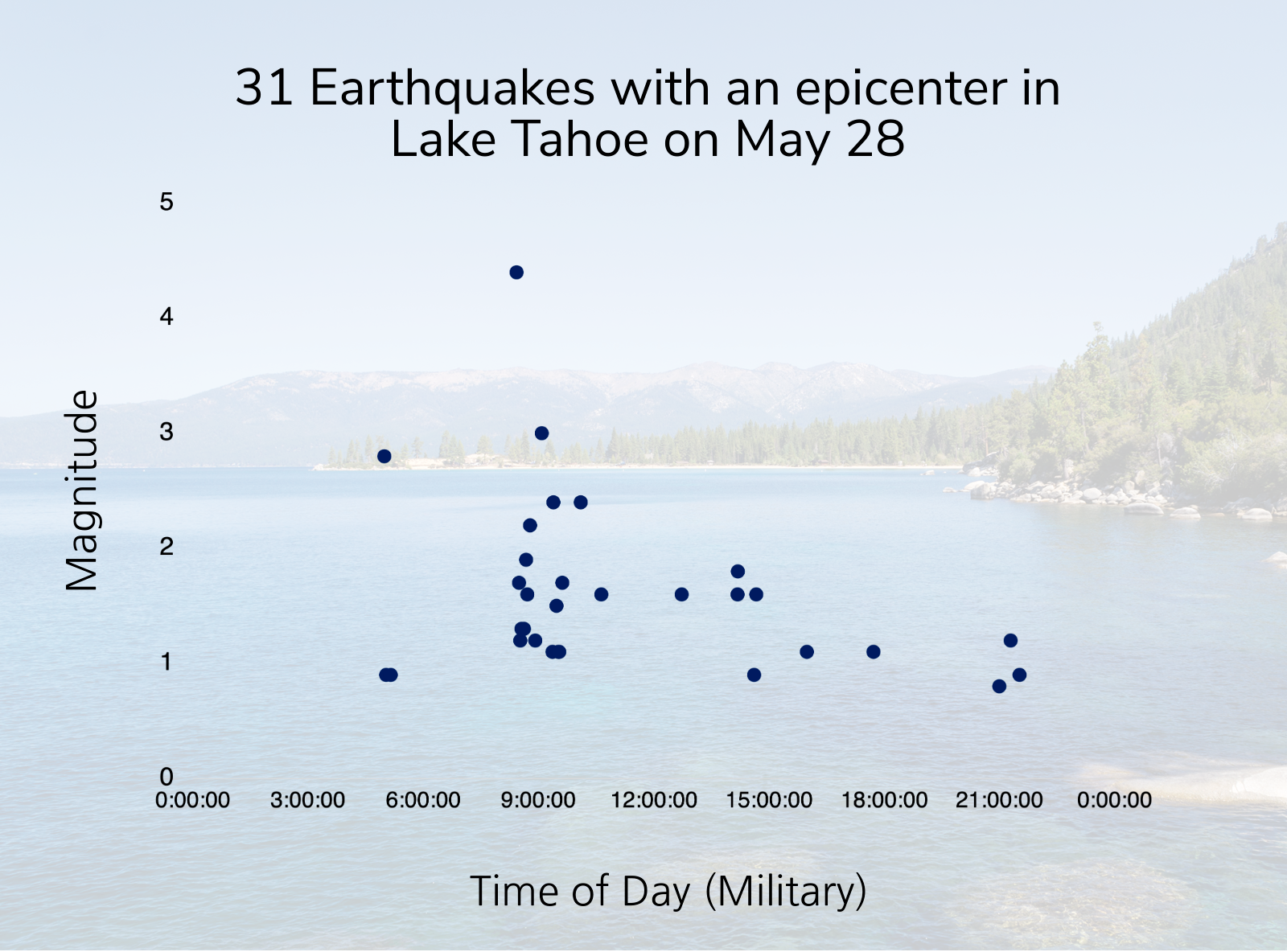 It might have been the start to a shaky summer — or just Northern Nevada sending out some good vibrations for Memorial Day weekend.
It might have been the start to a shaky summer — or just Northern Nevada sending out some good vibrations for Memorial Day weekend.
Either way, there’s no predicting the effect that last week’s magnitude 4.2 earthquake might have on Lake Tahoe’s seismic activity during June, but the quake does assure one thing: in the weeks to come, the likelihood that Tahoe’s fault lines will sift some sand is slightly higher than usual.
According to Dr. Graham Kent, director of the Nevada Seismological Laboratory and State Seismologist, the increased risk is not necessarily cause for concern, but cause for caution.
“Enjoy the beach, but if you do get a large shaking event, enjoy leaving the beach quickly,” Kent said in a phone interview with the Appeal.
Most years, Nevada ranks third among states with the most seismic activity in the U.S., and lots of that action is concentrated between Reno and Carson City.
Lake Tahoe in particular has three fault lines with enough power to cause damage: the Incline Village, Stateline, and West Tahoe faults.
Of the three, West Tahoe is the one to keep an eye on. Though all have the capacity for a magnitude 7 quake or larger, West Tahoe is about 750 years overdue for a rupture event, according to Kent.
“Classically, when people think about rupture, they think about ground cracking,” he said. Usually, earthquakes need to hit a magnitude of 6 before they approach the amount of power needed to rupture. When one of Tahoe’s faults does shake with that much ferocity, it can cause seiches—freshwater tsunamis—over 30 feet tall, according to the Seismological Lab.
Odds are against it, but there’s a small chance that last week’s quake was a foreshock for something larger, Kent said. As more time passes, those minuscule odds drop even further, but it will take them a while to reach “normal” earthquake probability levels. The lake has already seen a gentle decline in action this week; most of the tremors were concentrated directly after the initial shock.
For an earthquake with an epicenter below Lake Tahoe, it takes over a magnitude 3 quake for Carson City to even feel the shaking, Kent said. Residents are more likely to feel action from closer faults, like the Genoa fault line cutting west of Minden up to South Carson, or the Indian Hill fault east of Jack’s Valley. One of these faults, or an unidentified fault nearby, may have been responsible for the magnitude 4.5 earthquake that knocked items off of store shelves in March 2020, the Seismological Lab speculated at the time
In fact, Northern Nevada is so riddled with fault lines that the Sierra Nevada is growing — very, very slowly. Back in 2012, the Geodetic Laboratory at the University of Nevada, Reno clocked the range at about half an inch every decade. But that number is not necessarily the best frame of reference for mountain growth or earthquake severity.
“(The mountain range) grows in non-intuitive ways sometimes,” Kent said.
Really, instead of thinking of last week’s earthquake as a threat, it’s more so a gentle reminder that residents need to be prepared for possible shakedowns in the future.
The Seismological Lab recommends that residents remember to “look, duck, cover, and hold on” during more violent earthquakes. Check the surrounding area for hazards, find a sturdy desk or table for cover, and make sure to stay underneath that desk, even if it moves during the shaking.
For shaking along one of Lake Tahoe’s beaches, find higher ground as quickly as possible.
More earthquake safety tips and resources are available at the Seismological Lab’s website, http://www.seismo.unr.edu/Preparedness

